

There are severla sources of heel pain, including stress fractures of heel bone, Achilles tendinits and plantar fasciitis. For more information concerning heel pain, look under the plantar fasciitis and tendinitis headings.
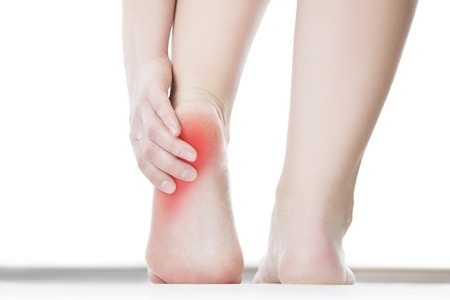

Plantar fasciitis is the most common cause of heel pain. The plantar fascia is a large ligament like structure that originates from the heel bone and inserts in the ball of the foot. Plantar fasciitis develops when this ligament begins to develop small micro tears, resulting in painful inflammation. There are a variety of factors that may lead to this including a lowered or elevated arch, trauma, overuse or poor foot mechanics. The pain associated with this condition is most pronounced with the first step in the morning or after prolonged sitting. Classically, one will experience a sharp pain with the first few steps which does diminish but not completely resolve after several steps.
Treatment may include stretching exercises, anti-inflammatory medications, cortisone injections, supportive shoes, custom inserts and surgery.


Nail fungus, or onychomycosis, typically presents as thickened and discolored nail plates , and may involve multiple toes, usually both feet. At times it wil only present in one foot, and is commonly associated with a history of Athlete's foot, a fungal infection of the skin. At times, thickening of th nail plates may be a result of previous trauma to the nail(s), repetitive biomechanical trauma, or loosening of the nail plate. Therefore, it is very important to establish the diagnosis of onychomycosis with a nail biopsy, and not on clinical appearance alone. A nail biopsy involves clipping aa small portion of the thick and discolored nail and sending it to a laboratory to conifrm the diagnosis prior to the initiation of the treatment.
Treatment can be either an oral medication or a topical medication, or a combination of both. It is important to keep in mind that treatment for this condition. The medications do not clear the nail of the fungal involvement, but allows a new nail to grow without the fungal infection.Finally, this condition can reoccur. The best way to prevent reoccurrence of this condition is to reat any Athlete's foot that may be present, and prevent it from spreading back into the nails.
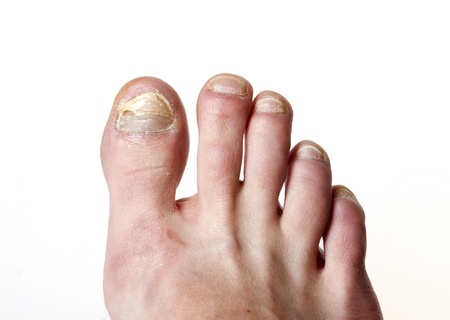

A bunion most commonly affects the big toe joint. They develop when the big toe shifts laterally and impinges upon the second toe and rotates in a counterclockwise direction. Retrograde pressure of the big toe results in prominence of the bone along the inside of the foot. Symptoms from a bunion may include shoe pressure on the prominent bone or bump pain. Also painful calluses, hammertoes, ingrown toenails or pain in the ball of the foot may occur.
Various factors may lead to the development of bunion deformities. Poor or tight fitting shoes may contribute. Family history is frequently contributory, as well as altered biomechanics. The deformity does tend to progress and increase in severity with time.
Initial treatment is primarily conservative and aimed at symptomatic relief. It includes wider and good fitting shoes, anti-inflammatories, lifestyle modification or padding. Surgery may be required in a bunion deformity and is reserved for cases where the symptoms are not controlled by conservative means.
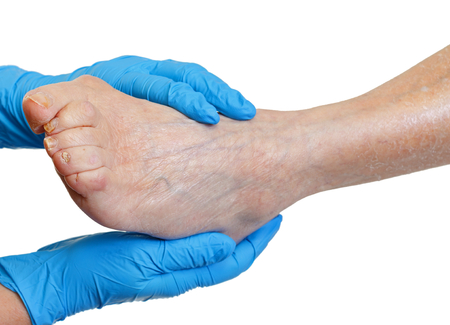

Corns and calluses are a thickening of the outer layer of the skin that form in areas of increased friction or pressure. Corns will usually form on toes as a result of increased pressure because of improper fitting shoes or deformities of the toes. Calluses will usually form on the ball of the foot and commonly result from excessive activity or weight-bearing on hard surfaces or from underlying bony abnormalities.
Conservative treatment may include periodic debridement of the thickened skin, padding, changing shoes or lifestyle modifications. Surgery may be indicated if conservative measures fail. Surgical procedures are geared toward removing the cause of the lesion, which may include removing spurs, straightening hammertoes and/or bunion correction.
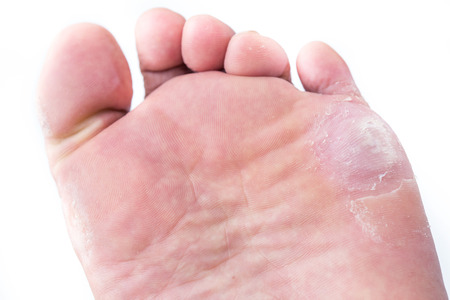

Ingrown toenails are a result of the borders of toenail applying excessive pressure on the surrounding skin. This pressure may even lead to a break in the skin and subsequent infection. Ingrown toenails may result from tight fitting shoes, trauma, improper nail trimming, abnormal nail structure or fungal infection.
Treatment may be as simple as trimming the corner of the nail. If the area has become infected, this may require trimming the nail border and removing any infected tissue under local anesthetic and/or oral antibiotics. A recurrent or chronic ingrown toenail may need to have the side of the nail permanently removed. These procedures are performed in the office and rarely result in loss of work.


Hammertoes describe a contracted or curled up position of single or multiple toe joints, frequently on both feet. The cause of the contracted position of the toes is usually from abnormalities in the structure and function of muscles and tendons. Tight or poor fitting shoes may contribute to formation of these deformities.
Conservative treatment is limited to wider and good fitting shoes, splinting and padding. Associated corns may be debrided or padding for symptomatic relief. Surgical intervention is reserved for cases in which conservative treatment does not adequately control symptoms. Surgery may include tendon transfers or release, fusion of the knuckle into a straightened position or removal of prominent bone to allow the toe to assume a more straightened position.
There are several common sources of heel pain, including stress fractures of heel bone, Achilles tendinitis and plantar fasciitis.


Warts are a viral infection that affects the outer layer of the skin. They often present as a callous-like growth with pinpoint black dots.
They may be solitary or in clusters. Treatment for warts may include topical medication, oral medications, surgical curettage or laser therapy. With any treatment for these lesions, there is always a chance of reoccurrence.


Tendinitis is inflammation of a tendon, a strong fibrous structure that connects muscles to bone. This may develop behind your ankle or on either side of the foot. If symptoms continue to progress or remain untreated, it may ultimately result in rupture of the involved tendon.
These symptoms may develop as a result of overuse, poor biomechanics or foot structure, or trauma. Conservative therapy may involve ice, anti-inflammatories, limitation of activities, physical therapy, rest, bracing, good fitting shoes or custom orthotics. In severe cases, surgery may be required to repair the damaged tendon and/or correct abnormal foot structure.
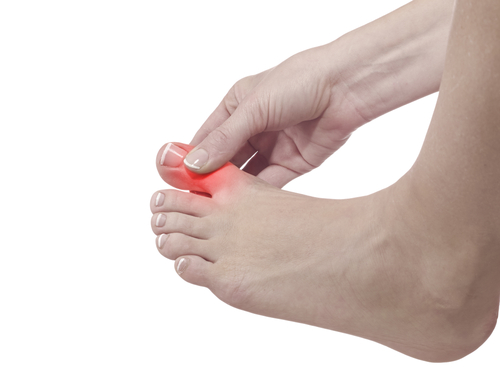

Gout is classified as an inflammatory arthritic condition , and typically involves isolated joints in the lower extremities. The most common jooint involved is the big toe joint, although it cam be present in any joint in the foot or ankle. It is caused by elevated levels of uric acid in the bloodstream, resulting in the deposition of the uric acid as crystals into joints. This results in an inflammatory reaction, and presents typically as a red, hot, and swollen joint. This condition is commonly associated with increased alcohol intake rich desserts, or increased protein intake, and may be a side effect of water pills (diuretics).
Treatment is focused initially on reducing the inflammatory process, and may involve non-steroidal anti-inflammatory medications (NSAIDs), oral corticosteroids, or a teroid injection into the inflamed joint. Long term treatment may include medication to lower the uric acid level or diet modification.
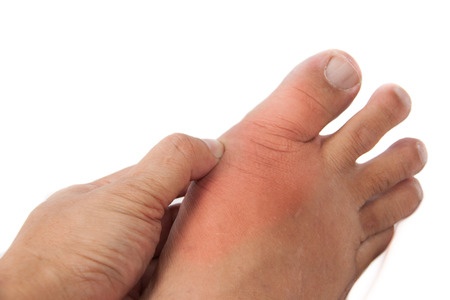

Neuromas frequently cause numbness, burning or shooting pain in the ball of the foot, which may radiate into the toes. It is caused by thickening of a nerve in the ball of the foot from repetitive trauma. This may be caused by bones in the foot rubbing together as a result of excessive activity or tight fitting shoes.
Treatment may involve x-rays to rule out osseous pathology, cortisone injections to reduce inflammation, padding, taping, proper shoes or orthotics. Some cases may ultimately require surgical excision of the inflamed portion of the nerve.
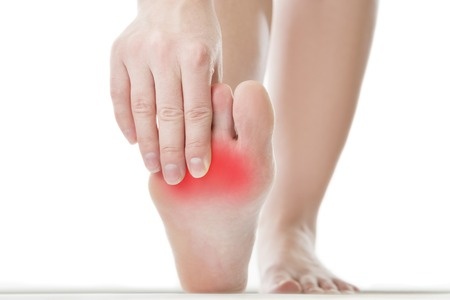

Flat feet refer to a reduced height of the medial longitudinal arch. It is frequently associated with bulging of the bone below the ankle bone on the inside of the foot, outward tilting of the heel bone, and/or the toes pointing outward. Symptoms vary widely in flat feet. In children, growth pains, tired legs or inactivity may be a sign of flat feet. Cramping and fatigue are also frequent complaints in children and adults. Most of these complaints are going to be associated with the multitude of muscle/tendon imbalances and joint derangements present with flat feet. These muscle/tendon and joint derangements subsequently result in an increased frequency, earlier onset and severity of other foot problems, which may include arthritis, tendinitis, bunions, neuromas and hammertoes.
Conservative treatment for this condition may include anti-inflammatory medications, stretching exercises or custom supportive orthotics. Surgery designed to correct the alignment of the foot is reserved for severe deformities or when symptoms are not controlled by conservative measures.


Degenerative , or osteoarthritis , is the most common type of arthritis in the foot and ankle.Symptoms of arthritis tend to start slowly, but often steadily increase over a period of months to years. They may include anything from stiffness in the morning , aching and throbbing, swelling around the joint, to overt pain. Movement of the joint frequently becomes limited if bone spurs from around the joint. Causes of osteoarthritis in the foot include trauma, wear and tear , and misalignment of the foot/joints.
Treatment is initially aimed at reducing pain. It may include ice , anti-inflammatory medications, or cortisone. Stiff shoes or inserts may limit symptoms by reducing movement of the involved joint. Surgery is indicated if symptoms begin to limit patient activities. Surgery may include trimming or shaving bone spurs, realigning the joint, joint fusion , or implants.
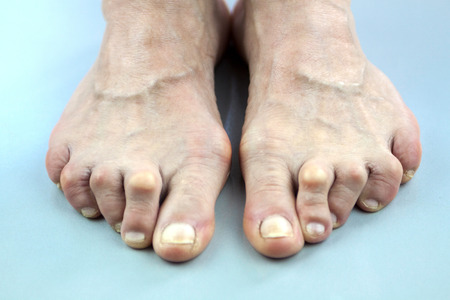

Diabetic foot care involves a thorough clinical evaluation and patient history, focusing on the patirent's vascular status, control of blood sugars, and neurological system within the lower extremities. A thorough education process includes techniques to not only prevent diabetic discovery of diabetic complications, but also assists in the early discovery of any potential diabetic foot. Early discovery of diabetic foot problems allows for early intervention to correct the problems, before potentially limb threatening conditions develop.
Diabetic patients in our practice typically receive diabetic evaluation and education on a yearly basis. Additional visits may involve diabetic nail care, obtaining proper diabetic shoes and inserts, and management of any diabetic foot problems that may develop.
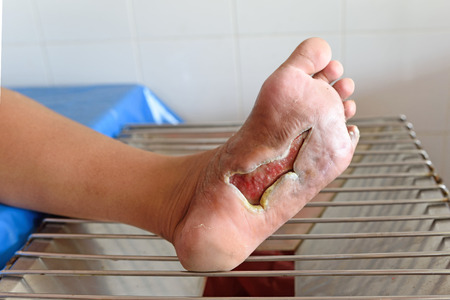

multiple skin and nail conditions are commonly seen in the feet. For more information on fungal nails, ingrown nails, warts and corns/callouses, please click on their headings.
Tinea pedis, or Athlete's foot, is a common skin condition, and is a fungal infection of the outer layers (epidermis) of the skin. The condition can range from mild dry, flaking skin withitching to painful inflammation and blisters. It typically presents on teh bottom of the foot, and or in between the toes.
Treatment typically involves a topical antifungal cream, which may include a cortisone cream if inflammation is involved.
Eczema is another common foot condition, and there are several types of eczema present.Diagnosis may require a skin biopsy, and treatment typically involves topical steroids. Skin cancers such as a malignant melanoma, can also present on the feet or ankles. They will typically appear as an irregular shaped and colored pigmented lesion or mole. Early diagnosis is the key, and is ontained with a skin biopsy.
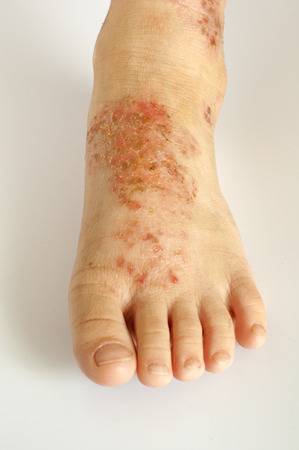

Sprains and fractures of the feet and ankles are typically seen as a result of some type of trauma to the lower extremities. Injuries may result from stubbing the foot or ankle, rolling or twisting injuries, or falls. It is important to note that the percieved severity of the trauma does not typically correlate with the severity of the inujury. a minor "trauma" frequently involves injuries. A patient who presents with a history of trauma as a thorough history of the injury obtained, followed by a clinical examination. Radiographs are obtained in the office, and reviewed with the patient.
Treatment may include immobilization in a non weightbearing fiberglass castm walking cast or surgical shoe. Bracing , arch supports, and physical therapy may also be included in the treatment plan.
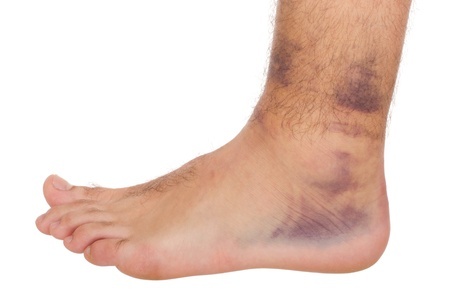
 330-899-9160
330-899-9160
